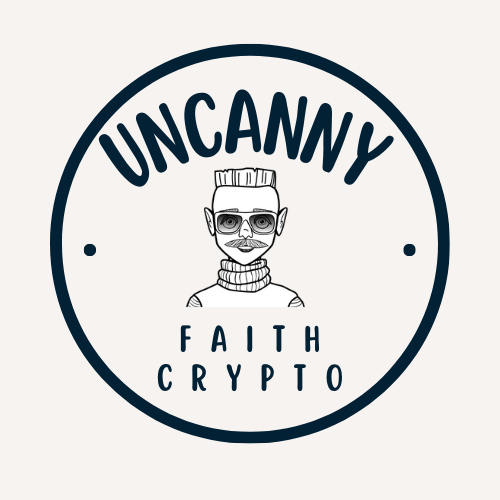The world of non-fungible tokens (NFTs) has experienced an explosive rise in popularity over the past few years, revolutionising the way we think about ownership, creativity, and digital innovation. From quirky digital art collections such as CryptoPunks to utility-driven NFTs used in gaming and metaverse ecosystems, the potential applications of NFTs seem limitless.
But as we set our sights on 2025, the NFT space is evolving rapidly, and with it, the dynamics of NFT marketplaces are shifting. What trends will dominate the future of NFTs? What predictions can we make now that will shape the way users and creators approach NFTs in the years ahead?
In this article, we’ll dive into the future of NFTs through key marketplace trends, practical predictions for 2025, and expert-backed insights that will guide enthusiasts and investors alike. You’ll also find actionable takeaways and answers to some of the most pressing questions related to the NFT ecosystem.
The Rise of NFTs: A Brief Look Back
Before we delve into the future, it’s worth taking a moment to reflect on the journey of NFTs thus far. Emerging prominently in 2021, NFTs became a buzzword as billion-dollar transactions flooded global newsfeeds. From Beeple’s $69 million sale of “Everydays: The First 5000 Days” to celebrities like Justin Bieber and Snoop Dogg minting digital collectibles, NFTs burst into the mainstream.
However, the market has matured significantly since its initial hype cycle. The shift in focus is now toward long-term utility, sustainable projects, and real-world applications. This evolution is laying the groundwork for what we can expect in 2025.
Key NFT Marketplace Trends Shaping the Future
1. Utility-Driven NFTs Will Dominate
By 2025, NFTs will no longer exist purely for aesthetic or speculative reasons. Instead, they’ll serve practical purposes across industries, with marketplaces focusing on NFTs offering real value to holders.
For example:
- Gaming NFTs: Characters, skins, and virtual assets in games like Axie Infinity will allow players to benefit from play-to-earn models.
- Memberships: NFTs could replace traditional subscription services, granting holders access to premium content, events, or communities.
- Real Estate: Tokenised real-world assets like property ownership will become more common.
- Music & Intellectual Property Rights: Artists could use NFTs to bypass intermediaries, selling music or licensing rights directly to fans.
This trend will drive decentralised NFT marketplaces that prioritise utility and innovation over quick profits.
2. AI-Generated NFTs and Personalised Creations
Artificial intelligence (AI) is tipped to be a game-changer for the NFT industry. In 2025, expect a surge in AI-generated NFTs where individuals can co-create unique digital assets based on personal preferences or genetic data.
Imagine owning an AI-crafted NFT that reflects your personality traits or mood in visual form. AI will make NFTs more inclusive and accessible to everyday users, allowing anyone to become an artist.
Additionally, marketplaces will likely integrate tools to create personalised NFTs, giving creators new ways to engage with buyers dynamically. Even better, these developments will open doors for niche marketplaces targeting specific audiences.
3. Cross-Chain NFT Ecosystems
One of the biggest barriers to NFT adoption today is the fragmentation of blockchain networks. Ethereum, Solana, Binance Smart Chain, and others all host different NFT ecosystems, often limiting interoperability.
By 2025, however, cross-chain compatibility will be a staple of NFT marketplaces. This means:
- NFT buyers, sellers, and collectors will trade seamlessly across chains.
- Lower gas fees as transactions migrate to Layer 2 solutions or more eco-friendly blockchains.
- Enhanced liquidity for NFT assets.
Technological advancements like bridges and decentralised protocols will unite disparate blockchain platforms, ensuring users no longer have to commit to a single ecosystem.
4. Immersive NFTs in the Metaverse
NFT marketplaces and the metaverse will be deeply intertwined by 2025. With Facebook rebranding as Meta, and tech giants increasingly prioritising immersive technologies, metaverse-driven experiences will boost NFT adoption.
NFTs in the metaverse will include:
- Virtual Wearables: Clothing and accessories for avatars.
- Exclusive Real Estate: Owning plots in popular virtual worlds such as The Sandbox or Decentraland.
- Interactive Collectibles: NFTs that users can interact with in 3D environments.
In 2025, as more brands enter the metaverse, marketplaces will adapt to include virtual showrooms where users can view and purchase NFTs in augmented or virtual reality settings.
5. Sustainability Will Take Centre Stage
As concerns about energy consumption and carbon footprints grow, sustainability will become a top priority in the NFT ecosystem. Ethereum’s transition to Proof of Stake (PoS) has already set the stage for more eco-friendly NFT platforms.
By 2025, expect marketplaces to embrace:
- Green blockchains: Protocols like Tezos and Avalanche that have minimal environmental impact.
- Carbon-offset initiatives: NFT projects contributing to environmental sustainability through eco-friendly practices.
Sustainability will no longer be a selling point but a standard. NFT marketplaces that fail to align with green strategies may struggle to maintain relevance.
6. Regulation and Compliance Will Reshape Marketplaces
2025 will be defined by the increasing presence of regulatory oversight within the crypto and NFT spheres. Governments across the globe are already working on frameworks to govern digital assets, and compliance will be vital for marketplace success.
Key changes may include:
- KYC (Know Your Customer): Buyers and sellers will need to undergo verification to prevent fraud, money laundering, and scams.
- Standardised Contracts: Marketplaces will offer safer and more transparent NFT purchases with universal standards for smart contracts.
The added structure and security provided by regulations could make NFTs more appealing to mainstream audiences and institutional investors.
7. Growth of Niche NFT Marketplaces
By 2025, we predict a rise in specialised NFT marketplaces tailored to specific sectors or communities. Rather than listing everything under the sun, niche platforms will cater exclusively to:
- Fashion-focused NFTs.
- Sports memorabilia.
- Photography and fine art tokens.
- Decentralised gaming assets (GameFi).
Such segmentation will allow creators to find their ideal audiences, while buyers enjoy curated experiences based on their unique tastes and interests.
Expert Predictions: Where Will NFT Marketplaces Find Their Edge?
- Collaborations Between Brands and Creators: Experts believe that strategic partnerships will define the next wave of NFT adoption. For instance, fashion brands collaborating with digital artists to create wearable NFTs.
- Integrated AI Valuation Tools: Marketplaces may introduce AI-driven pricing mechanisms, ensuring assets are accurately valued based on real-time market conditions.
- Subscription-Based Marketplaces: Imagine paying a monthly fee to access tools, community perks, and exclusive content on premium NFT platforms.
Practical Tips for Engaging with NFTs in 2025
- Diversify Your Portfolio: Don’t put all your eggs in one basket. Explore NFTs in different categories—art, gaming, metaverse, and utilities.
- Think Utility Over Aesthetics: Prioritise assets with real-world applications or tangible benefits beyond hype.
- Research NFT Marketplaces: Each platform has its strengths. Look for marketplaces that align with your goals, whether it’s investment or creativity.
- Stay Updated on Regulations: Ensure your investments comply with legal frameworks to avoid future headaches.
Frequently Asked Questions (FAQs)
Q1. Will NFTs remain popular by 2025?
Yes, but the focus will shift from speculative buying to meaningful and utility-driven applications. Marketplaces that adapt to this change will thrive.
Q2. How can beginners enter the NFT market?
Start by learning the basics of blockchain and NFT technology. Join beginner-friendly marketplaces like OpenSea or Rarible and experiment with low-cost NFTs.
Q3. Are environmental concerns still an issue for NFTs in 2025?
Less so. By 2025, many platforms will operate on eco-friendly blockchains like Tezos, reducing the environmental impact significantly.
Q4. Will regulations hurt NFT innovation?
Regulations won’t stifle innovation but will bring legitimacy and security to the market, encouraging wider adoption.
Conclusion
The future of NFTs is not just bright—it’s evolutionary. As we approach 2025, NFT marketplaces will become more sophisticated, focusing on utility, inclusivity, and sustainability. From revolutionising industries like gaming and real estate to creating immersive experiences in the metaverse, NFTs are poised to redefine how we interact with digital and tangible worlds.
By staying ahead of trends and embracing innovation, buyers, creators, and marketplaces alike stand to benefit. So, whether you’re a seasoned investor or curious newcomer, the time to explore the exciting future of NFTs is… now.
Stay tuned, stay informed, and get ready to shape the revolution. Your place in the NFT ecosystem is just one click—or mint—away!

